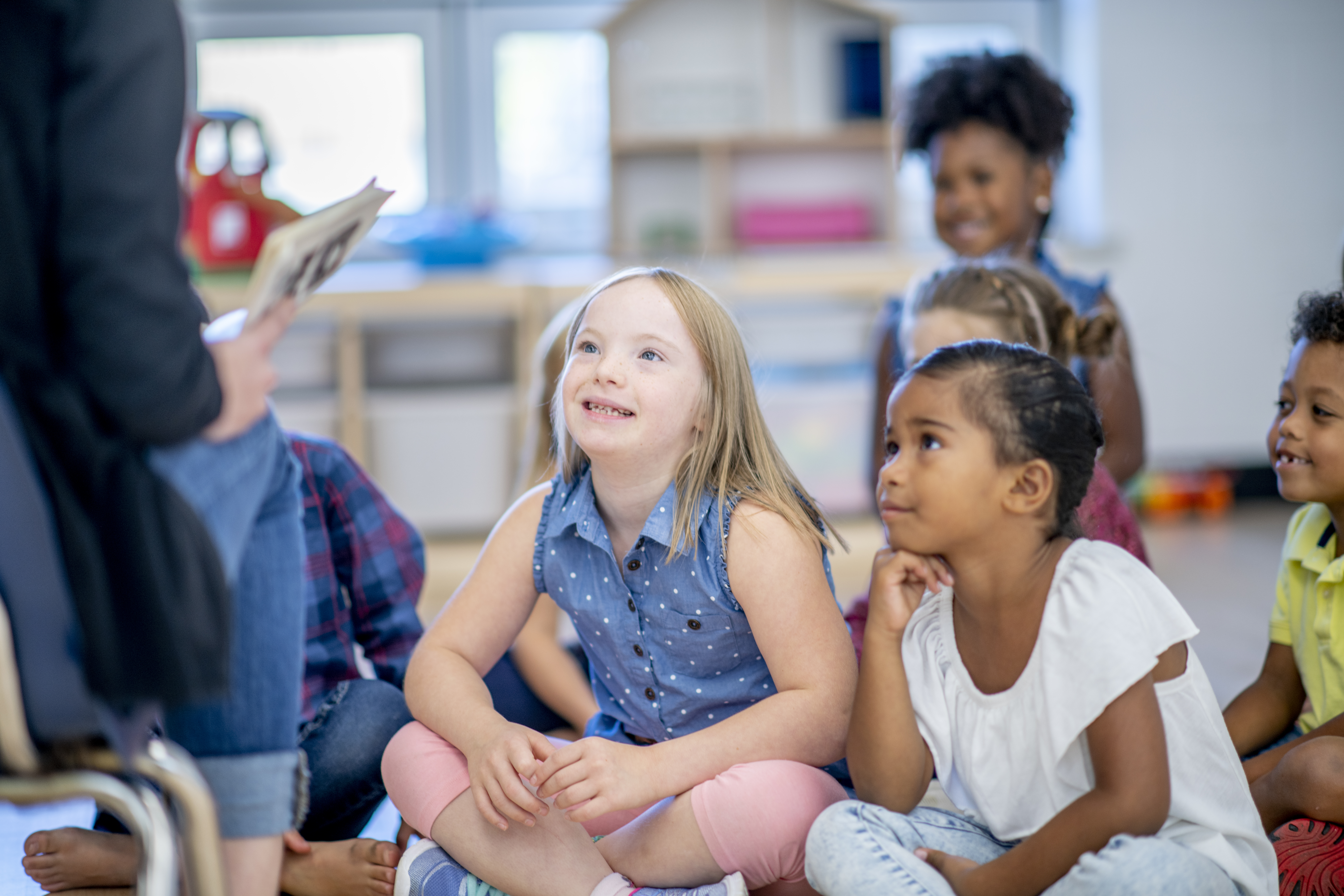As Multi-Tiered Systems of Support (MTSS) have been implemented in schools and districts across the country, the right relationship between MTSS and special education hasn’t always been clear. Can one fit under the umbrella of the other? Does one replace the other? How can leaders from each work together?
MTSS and special education leaders face significant challenges, often having to meet those challenges with limited resources—making efficient and effective collaboration critical. This blog will help you clarify the purposes and practices of MTSS and special education within schools and districts. It will also help you envision what efficient and effective alignment and collaboration between the two might look like.
What Is the Difference Between MTSS and Special Education?
In a nutshell, MTSS is meant to support all students, including students receiving special education services. This means that students can benefit from special educators and MTSS leadership working together.
Because education initiatives and approaches for supporting students sometimes have overlapping purposes, the distinctions between them can get muddied. Let’s clarify those waters. MTSS and special education are both ways to support student success, but they are not the same thing. Here’s why.
What is Special Education?
Special education is a legally mandated process of supporting students with disabilities, as laid out by the The Individuals with Disabilities Education Act (IDEA) and overseen by the U.S. Department of Education.
The process includes developing an Individualized Education Program (IEP) for each student who will be receiving special education services. The IEP is a legal document that includes an explanation of how the student’s disability affects their academic achievement, measurable goals for the student, accommodations or services that will enable the student to meet those goals, and a plan to measure progress toward goals.
Example: A first-grader with Down syndrome may have an IEP that includes a goal to increase fine motor skills via occupational therapy.
What is MTSS?
In contrast, the MTSS framework offers a school- and district-wide system of supports for all students, which includes students receiving special education services. Although it is not federally mandated, MTSS had been adopted by more than half of U.S. states as of 2019, and today that number is likely higher.
MTSS is a holistic structure that can encompass academics, behavior, attendance, and life skills. Districts usually organize the components of MTSS into three tiers of support:
-
Tier 1 consists of high-quality core instruction for all students.
-
Tier 2 supports are typically delivered to 15-20% of students for whom Tier 1 is not sufficient support, often delivered in small group settings.
-
Tier 3 represents the most intensive interventions for individual students, typically reserved for no more than 5% of students.
Example: A teacher might deliver a Tier 2 academic intervention by inviting a few students to participate in a Homework Club after school.
What are the Similarities between MTSS and Special Education?
In addition to understanding the distinctions between MTSS and special education, we also need to understand how these structures relate to each other within schools and districts.
Here are some commonalities between the two:
-
Individualized Plans: Students who receive support in Tier 2 or 3 will get an intervention plan created. For those students that qualify for special education, an IEP is also created with specific goals in mind.
-
Collaborative Effort: Both MTSS and Special Education rely on their individual teams to collaborate with one another to work towards the identified goals of their students.
-
Goal Setting: For students in Tier 2 or 3, proper goals are created in order to measure improvement in specific areas. Similarly, students with disabilities use a myriad of identification processes to identify needs and work towards those goals with individualized support.
A frequently asked question is whether MTSS is a pathway to special education, where students might move through the MTSS tiers and receive special education services only once MTSS plays have been exhausted.
The answer to this question is complex. RTI was originally developed as a way to systematically take a data-based approach to discovering students who might be eligible for special education services if they didn’t respond to high-quality core instruction and Tier 2 academic interventions.
However, it’s possible for families to feel that the provision of needed special education services has been unnecessarily delayed when schools offer an RTI or MTSS process as a first step in supporting a student’s success.
Parents or guardians have a right to request evaluation of their student at any time. Schools can propose a trial of MTSS supports—which may be sufficient to meet the students’ needs, but may encounter legal challenges if families feel this constitutes a failure to act on the request for evaluation.
Why MTSS and Special Education Should Work Together
Similarly, concerns have been raised that when special education is treated like a tier of MTSS, students receiving special education services may not be appropriately integrated in general education.
The Individuals with Disabilities Education Act (IDEA) mandates that students receiving special education services should be educated in the “least restrictive environment,” which means they should be in the same classroom as the other students as much as possible. Research shows students who are receiving special education services also benefit from MTSS.
It helps to remember that students themselves are not in particular tiers, but rather may require interventions at various tiers at different times. Interventions are tiered, not students. This is reflected in person-first language that describes a trait as something a person has rather than something they are. For example, instead of “special education student” we might say “student who receives special education services.”
Example: A student with a physical disability may need individualized accommodations for physical education, while at the same time be identified as “gifted and talented” in academic domains. Such students who experience both giftedness and disability are sometimes called “twice exceptional.”
MTSS Helps Get Students the Right Supports at the Right Times
Although students’ responses to MTSS interventions are not sufficient alone to identify those who have disabilities, it may help to ensure that students who are candidates for testing are identified.
Conversely, a strong MTSS implementation backed with data analysis capabilities can help mitigate over-identification of students for special education services.
Example: A student who is not progressing toward grade level reading benchmarks may be referred to a Tier 2 reading group to support them in developing reading skills. The reading specialist running the group may then notice the student exhibiting possible signs of learning disabilities and make a screening referral.
Should MTSS and Special Education Leaders Work Together?
MTSS is for everyone. Because of the principle of "least restrictive environment," 95% of students with disabilities spend at least some of their instructional time in general education. So students with special education needs will be a part of the population receiving supports via MTSS. MTSS can even provide the mechanism for providing students with IEPs equitable access to general education.
Students stand to benefit when special education and MTSS leaders collaborate. Here are a few ideas for what alignment and collaboration might look like in your school or district:
-
Leadership. Consider including special educators on MTSS implementation teams and school leadership teams, so they can be at the table for problem-solving and decision-making.
-
Professional Development. To get all members of the MTSS team on the same page, including special educators, you may wish to offer shared MTSS professional development opportunities.
-
Co-Teaching. When students receiving special education services are included in general education, school administrators can support collaboration and co-teaching between special educators and general education teachers.
-
Data-Based Decision-Making. Data analysis that looks at trends for students within MTSS progress monitoring can help educators determine which interventions are working and which might need revisiting.
Data Collection and Progress Monitoring
District leaders who use Panorama Student Success can pull into the platform special education status as part of student demographic data. They can then filter the data to understand how their MTSS practices impact students who are receiving special education services. And they can monitor students' responses to intervention plans.
This type of demographic data analysis can also help education leaders assess equity concerns, such as whether English language learners (ELL) may be misidentified as disabled.
Marcus Wood, Senior Director for Secondary Curriculum, Instruction, and Assessment at Desert Sands Unified School District (DSUSD), shared how Panorama helps them understand demographic data: “The information allows us to disaggregate the data by different student groups—whether it be our English learners, students with disabilities, students with different ethnicities—for us to ensure that we're meeting the needs of all of our students. Data sometimes may look pretty good overall as a district, but when you isolate it into specific student groups, you realize that there are areas of growth.”
Did you know? Panorama Student Success, our all-in-one MTSS platform, syncs nightly with popular SIS and assessment systems, so you have the most up-to-date data at your fingertips.
Stronger Together
MTSS and special education leaders ultimately all want the same things—to enable equitable access to high-quality education—so struggling students can become thriving students.
Collaboration between MTSS and special education leaders enables everyone on the team to learn from each other about the needs of all students, and what interventions best support their growth and learning. This way, no student slips through the cracks.




.png)


